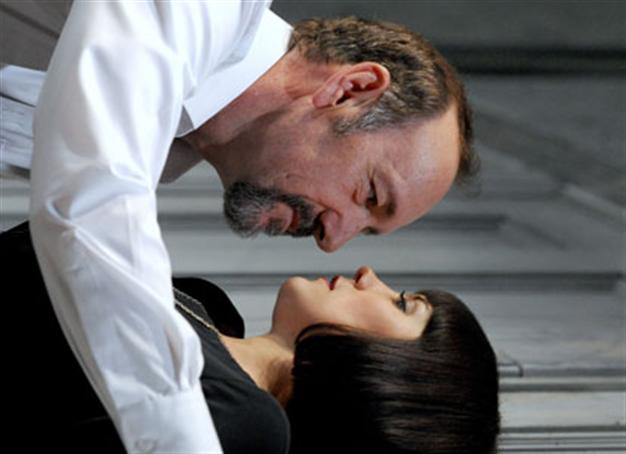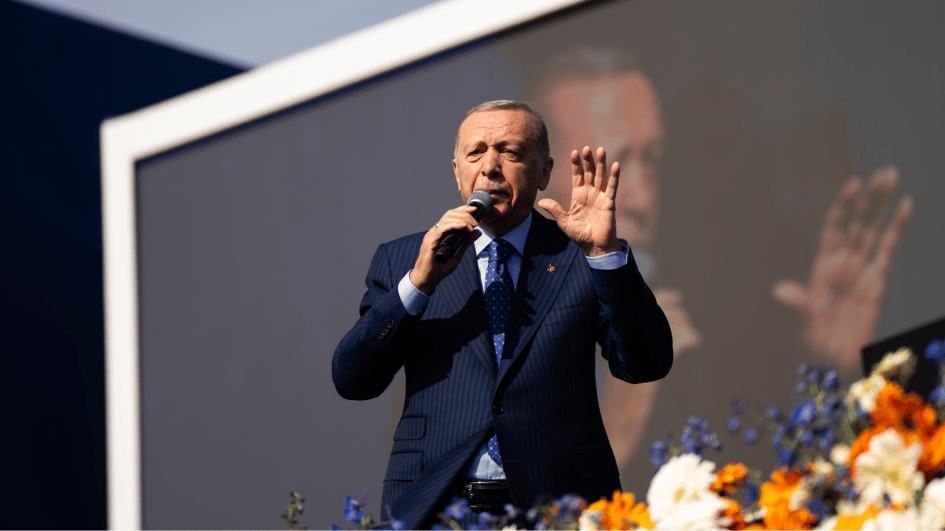Warming up to Shakespeare’s Richard III
ISTANBUL- Hürriyet Daily News

It is surely a great opportunity for the Turkish audience to see Richard’s passage through different characters with Kevin Spacey’s acclaimed performance. The first performance of ‘Richard III‘ is on Wednesday at Harbiye Huhsin Ertuğrul Stage. Photo: Alistair Muir.
As the Turkish premiere director Sam Mendes’ production of Shakespeare’s ‘Richard III’ on Wednesday draws near, delving deeper into the period’s historical chaos allows viewers to gain a better grasp of the text’s plot
Tickets for the Istanbul dates of Sam Mendes’ production of the classic Shakespeare work “Richard III” were sold out almost instantly, thanks in part to the star attraction of main man Kevin Spacey. In the rush to see the play, however, many viewers are likely to be relatively unacquainted with the play’s historical context; a lack of knowledge about the play’s historical background will not necessarily affect the viewing pleasure, but acquiring a better grasp of the text’s plot, which is to be staged in full, as well as a familiarity with the period’s historical chaos, would benefit many an audience member.
For an Elizabethan audience, William Shakespeare’s ‘Richard III’ displayed an ultimate evil incarnate whose final fall suggested an act of divine justice. For the modern audience, however, the character’s range from a “false passionate brother,” to “a false amorous lover,” to a “false pious man” and a “false reluctant heir to the throne,” is the source of an admiration that is mostly attributed to the talent and success of the actor rather than the character’s creator.
Yorks vs. Lancasters
In the late 15th century, England’s royal family was engaged in a power struggle that periodically erupted into violence. Historians have labeled this battle the Wars of the Roses, after the family symbols of the two contending groups: the Lancaster family, symbolized by a red rose, and the York family, symbolized by a white one. The two families were founded by the fourth and fifth sons of King Edward III, who was from the house of Plantagenet. The elder brother was John of Gaunt, the duke of Lancaster, while his younger brother was Edmund of Langley, the duke of York.
After the death of Edward III, King Richard II, descended from Edward’s eldest son and thus neither a York nor a Lancaster, ruled for 22 years. However, he was soon overthrown by his cousin, a Lancaster named Henry Bolingbroke who later became Henry IV; the latter was in turn succeeded by his son, Henry V, who was also followed by Henry VI.
In the late 15th century, fighting broke out again, this time between the Lancasters and Yorks.
After a bloody struggle, the Lancastrian Henry VI was deposed in 1461 and the head of the house of York took the throne as King Edward IV. Henry VI briefly resumed the kingship in 1470, but again he was deposed. In 1471, Henry’s son and heir, known as Edward Prince of Wales, was killed in battle and Henry was put to death. The sons of the York family, King Edward IV, Clarence, and their younger brother Richard, were victorious. After the executions, Edward took the throne once again.
The action of the Richard III production begins right after this event.
The play’s final scene shows the 1485 Battle of Bosworth Field between the houses of York and Lancaster, after which the victorious Henry Richmond, a descendant of a secondary branch of the Lancasters, attains the throne for the Tudor family which Shakespeare’s patron Elizabeth I famously comes from. That is why Shakespeare’s representation of Richard III, which relies heavily on the accounts of early chroniclers like Thomas Moore, Edward Hall and Raphael Holinshed, is often labeled a Tudor propaganda piece.
Richard: The deformed, crippled monster
Richard’s exaggerated ugliness – which includes his hunchback nature, his disproportionate limbs and various physical malformations due to premature birth – which he expresses in his opening soliloquy, is like a reflection of the ugliness of his heart and mind. In fact, a coronation portrait of Richard shows no sign of this alleged deformity.
Through the opening soliloquy to the audience, Richard informs them about his future villainy, openly presenting his ugliness as its justification.
This soliloquy is also a splendid introduction to Richard’s mastery of language, which constitutes part of his charm as a character.
Richard’s eloquence allows him to persuade Lady Anne to marry him after he woos her during the funeral of her husband – who was killed by Richard himself. His mastery reaches even to the extent of convincing late King Edward’s wife to make her daughter consent to marrying Richard, despite the fact that he killed the couple’s two young sons.
The reason for the eloquence Shakespeare bestows upon Richard, in addition to his ugliness and villainy attributed, is to depict him as a satanic figure, reminiscent of Eve’s seduction in “Genesis.” This emphasis on the power of discourse, therefore, requires at least a minimal acquaintance with the original text and the language of the text so as to acquire an increased viewing pleasure from a play which deftly portrays an anatomy of evil.
Richard can be the desperate lover, suffering brother, self-sacrificing uncle and pious king when required. Therefore, the total action of the play, which proceeds as a play-within-a-play, depends on the “shape-shifting” of Richard in a wide range of identity.
In his final soliloquy, however, a completely different Richard appears before the audience. Unable to express his thoughts in an intelligible order, Richard undergoes a transformation into a pathetic Quasimodo rather than experience the tragic fall common to classical tragedies. In fact, the real moment of Richard’s defeat is when he loses control over his discourse – an instant which comes long before the war he was doomed to lose before it even began.
It is surely a great opportunity for the Turkish audience to see Richard’s passage through all these different characters with Spacey’s acclaimed performance. However, one must keep in mind that part of the actor’s success is due to the Bard himself, who created a remarkable character out of the boring Duke of Gloucester by lending him much from his own mastery of language and eloquence.
















